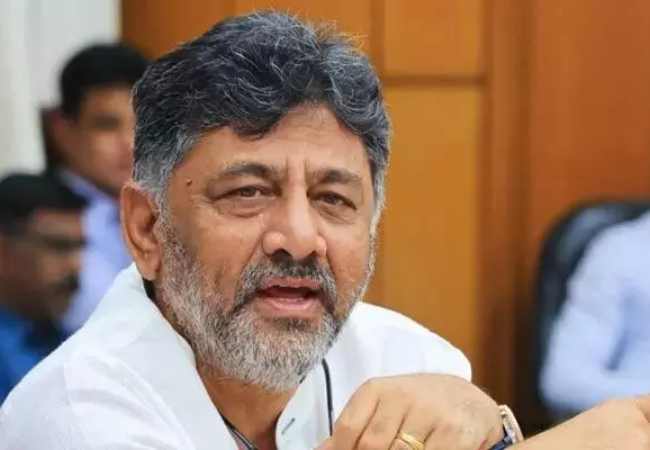London: A rare late ninth century stone statue of Lord Shiva, which was stolen from a temple in Rajasthan and smuggled to the UK, will be returned to the Archaeological Survey of India (ASI) on Thursday.
The stone Nataraj/Natesha murti, in chatura pose with jatamakuta and trinetra and almost four-feet-tall, is a rare depiction of Lord Shiva in the Prathihara style.
It was stolen in February 1998 from Ghateshwar Temple in Baroli, Rajasthan. In 2003, it came to light that the statue had been smuggled out to the UK.
When this information was received in London, the UK authorities were contacted and with their support the matter was pursued with the private collector, who was in possession of the idol in London. He voluntarily returned the idol to the Indian High Commission in the UK in 2005, said the High Commission of India in the UK.
In August 2017, a team of ASI experts visited the India House and examined the idol, which took pride of place inside the building's main lobby. The experts confirmed that it is the same statue that was stolen from Ghateshwar Temple.
An official Indian government communique said that in line with the government of India's renewed impetus to protecting India's cultural heritage and showcasing it to the world, the Ministry of External Affairs (MEA) along with India's law enforcement agencies have been actively pursuing investigations and restitution of stolen and smuggled Indian antiquities.
As a result, antiquities and idols have been returned to India from various countries, including the US, Australia, France and Germany.
The High Commission of India (HCI) in London said it has also been playing a leading role in the successful restitutions and repatriations of India's cultural heritage.
HCI is presently working with various law enforcement agencies to trace, seize and retrieve stolen artefacts. HCI is working on many such cases at present. We are confident that in coming days, in partnership with the ASI, government of India, state and central authorities as well as UK law enforcement agencies and independent experts, we will be successful in returning more items of our cultural heritage to India, a statement said.
Some examples of restitution from the UK include the Bramha-Brahmani sculpture, which was stolen from India and returned to the ASI in 2017. It has found a prominent resting place at Purana Quila Museum in New Delhi, in the gallery curated by the ASI.
On August 15, 2018, a 12th century bronze statue of Bhagawan Buddha was restored to the Indian High Commission by London's Metropolitan Police and then handed over to the Indian government last year.
Let the Truth be known. If you read VB and like VB, please be a VB Supporter and Help us deliver the Truth to one and all.
Bengaluru (PTI): Karnataka has proposed a new Information Technology Policy for 2025–2030, offering extensive financial and non-financial incentives aimed at accelerating investments, strengthening innovation and expanding the state's tech footprint beyond Bengaluru.
The Karnataka Cabinet gave its nod to the policy 2025–2030 with an outlay of Rs 445.50 crore on Thursday after the Finance Department accorded its approval.
The policy introduces 16 incentives across five enabler categories, nine of which are entirely new, with a distinctive push to support companies setting up or expanding in emerging cities.
Alongside financial support, the government is also offering labour-law relaxations, round-the-clock operational permissions and industry-ready human capital programmes to make Karnataka a globally competitive 'AI-native' destination.
According to the policy, units located outside Bengaluru will gain access to a wide suite of benefits, including research and development and IP creation incentives, internship reimbursements, talent relocation support and recruitment assistance.
The benefits also include EPF reimbursement, faculty development support, rental assistance, certification subsidies, electricity tariff rebates, property tax reimbursement, telecom infrastructure support, and assistance for events and conferences.
Bengaluru Urban will receive a focused set of six research and development and talent-oriented incentives, while Indian Global Capability Centres (GCCs) operating in the state will be brought under the incentive net.
Incentive caps and eligibility thresholds have been raised, and the policy prioritises growth-focused investments for both new and expanding units.
Beyond incentives, the government focuses on infrastructure and innovation interventions.
A flagship proposal in the policy is the creation of Techniverse -- integrated, technology-enabled enclaves developed through a public-private partnership model inside future Global Innovation Districts.
These campuses will offer plug-and-play facilities, artificial intelligence and machine learning and cybersecurity labs, advanced testbeds, experience centres, and disaster-resistant command centres.
There will also be a Statewide Digital Hub Grid and a Global Test Bed Infrastructure Network, linking public and private research and development, and innovation facilities across Karnataka.
The government has proposed a Women Global Tech Missions Fellowship for 1,000 mid-career women technologists, an IT Talent Return Programme to absorb experienced professionals returning from abroad, and broad-based skill and faculty development reimbursements.
Shared corporate transport routes in Bengaluru and tier-two cities will be designed with Bengaluru Metropolitan Transport Corporation and other transport entities to support worker mobility.
The government said the policy is the outcome of an extensive research and consultation process involving TCS, Infosys, Wipro, IBM, HCL, Tech Mahindra, Cognizant, HP, Google, Accenture and NASSCOM, along with sector experts and stakeholder groups.
It estimates an outlay of Rs 967.12 crore over five years, comprising Rs 754.62 crore for incentives and Rs 212.50 crore for interventions such as Techniverse campuses, digital grid development, global outreach missions and talent programmes.





